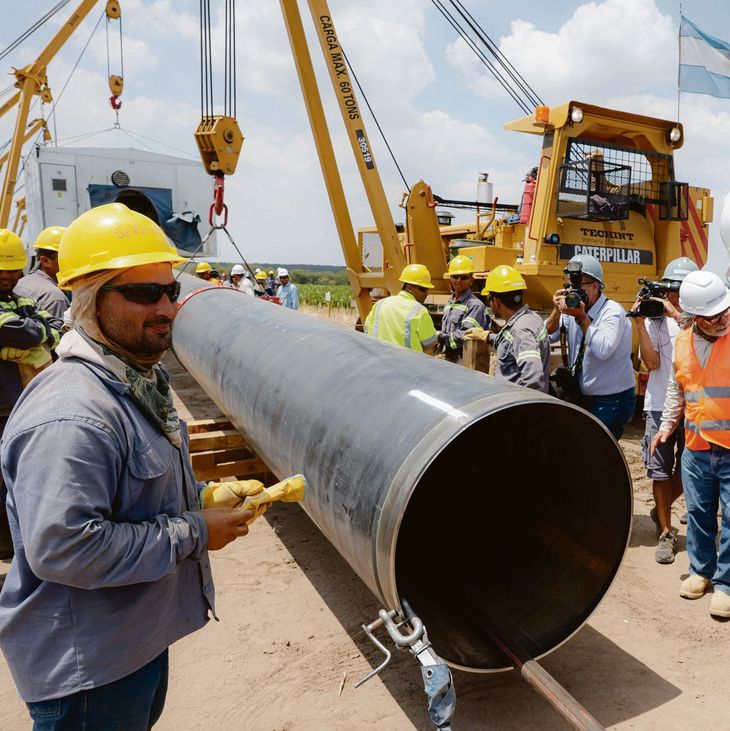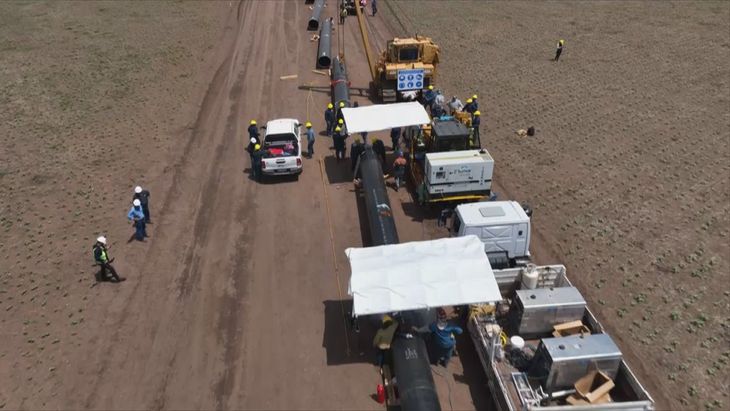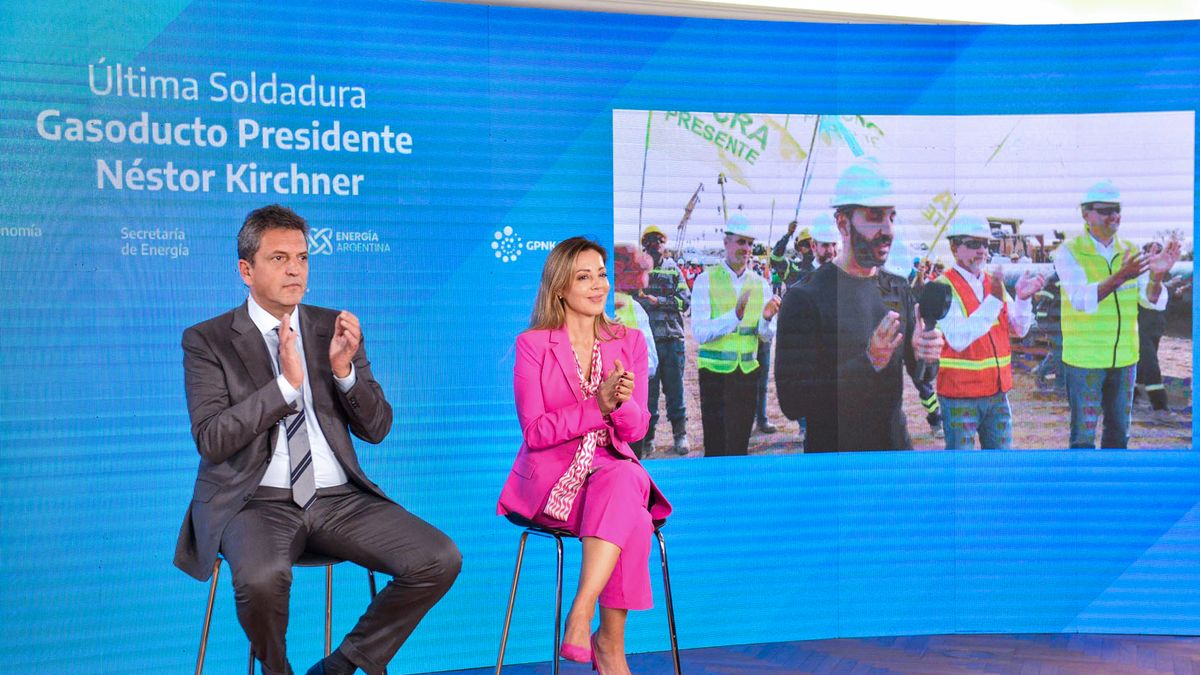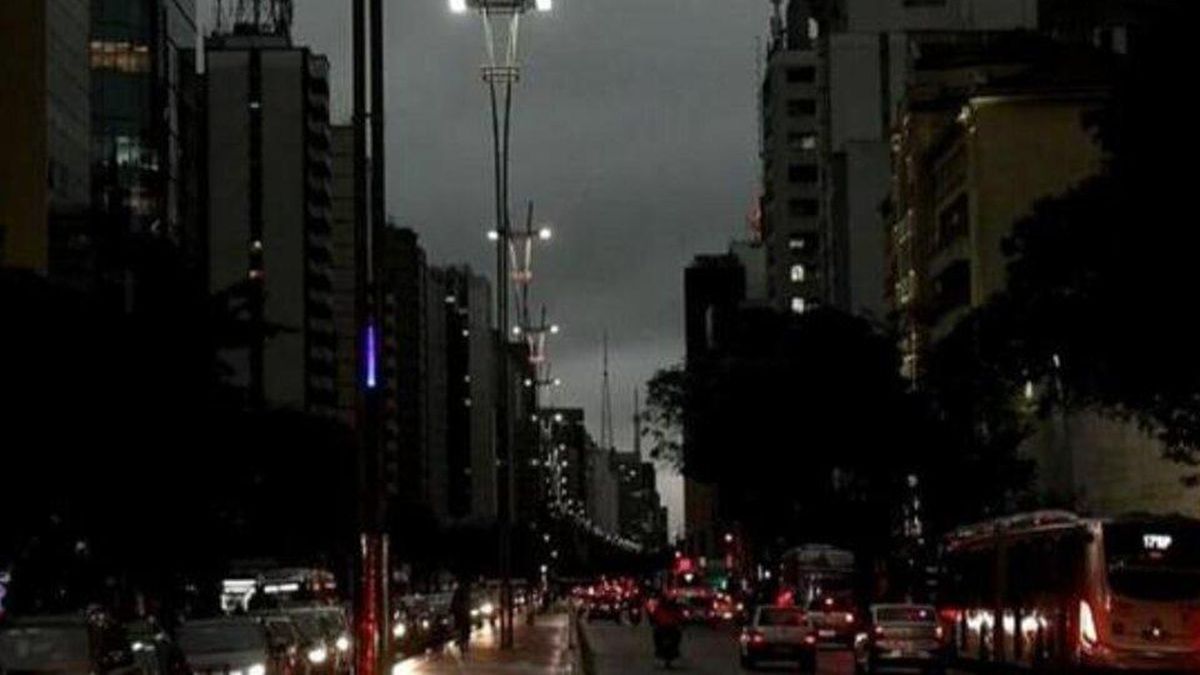Augustine Gerez gave rise to the last regular “in-line” weld (as the place where the pipes pass is called) of the Gas Pipeline. It was done in the kilometer 232 of the traceat the height of the La Pampas provinceat the junction point of sections 1 and 2, of the three into which the work was divided.
Nestor Kirchner Gas Pipeline (NA).jpg
During the act, Massa assured that “For us today marks a before and after in Argentine energy policy”, while specifying that the Gas Pipeline “the first thing it represents is foreign currency savings; only this year 2,100 million dollars less than we are going to import gas”. In addition, he pointed out that “It is not only useful in energy mattersnot only guarantees gas for our industrial development and for the supply of central and northern Argentina, but also makes it possible to think of an Argentina that exports energywhich is fundamental for us”.
Likewise, the head of Economy remarked that the work “means the demonstration that when we promote an idea, we do it with order, with decision, with determination, where everyone does what they have to do, and not everyone does what they think they have to do, but everyone does their part and we all work together”.
In this framework, the President I affirm that “today we are gaining in energy sovereignty, when many told us that this was impossible to do, that it was a longer job, that we were not going to arrive on time, there it is, when we all agree, things work”. “When we all have the same will, things work, when businessmen, workers and the State have the vocation to solve problems that Argentina hasthings work and here we have the best proof”, he added.
In addition, the Head of State highlighted thate “Argentina today is saving between 2 and 3 billion dollars of energy, which before had to be imported at the cost of our reserves”. “I hope that, in addition, we understand that you are able to provide that gas that Vaca Muerta has to take it to all of Argentina, not only to homes, but to industries, factories that need that gas to be able to motorize their production. Also to the large power plants, which need this gas to be able to generate the energy that we use so much”, Fernández stated. Finally, the President recalled that “Argentina had not faced a work of this magnitude for more than 4 decades, and we were able to achieve it in our management with a pandemic, with war, with droughtbut with enormous will and with enormous decision”.
For his part, gerez He maintained that “in economic terms, we always emphasize it, it is a work that brings us closer to a fundamental milestone that is energy sovereignty.” Along these lines, the President of Energía Argentina highlighted that it is about “a work that is executed in 9 months, but that in natural terms should have been executed in 24 monthsthat the most advanced technology existing in the world has been used”.
pipeline.jpg

The long-awaited infrastructure work It will go live on June 20., as they assured from the Government. During this month The necessary hydraulic tests will be carried out to register any type of failures in all its sections.
In this regard, the president and CEO of SACDE, damian mindlin, stated: “We have developed this work meeting all the stipulated deadlines, with strict planning that allowed us to do it in record time. We mobilized more than 1,250 teams and used technology that has never been implemented in the country.” And he added: “We are proud of the great work of our entire team, we executed together with Techint a work that will mark a before and after in the energy development of the country in a period of 10 months, when usually this type of work is carried out in 24 months”
The official information indicates that the work will allow reverse the deficit of the energy balance from the exploitation of Vaca Muerta. As projected, the work will generate US$ 1.9 billion in energy import savings for the second half of 2023, while for all of 2024, it is expected that the savings is more than US$ 4,000 million.
However, the two compression plants still need to start up: one in Tratayen, which is already in place, and another in Saliqueló, which still needs to be moved. Once these two compressors are installed, the Vaca Muerta gas will be able to transport 22 million MMm3 per day, twice as much as without them.
In addition, during the second semester the Government will seek to announce two other works: on the one hand, the second stage of the Néstor Kirchner gas pipeline, which could be tendered on June 20 and will explore sources of financing from Brazil and will invite the private sector to participate; and on the other, The start-up of the reversal of the North Gas Pipeline is expected to transport Vaca Muerta gas to central and northern Argentina.
gas pipeline nestor kirchner salliquelo 1.jpg

This project already has confirmed funding from the Andean Development Corporation (CAF), for a total of $540 million.
Source: Ambito




